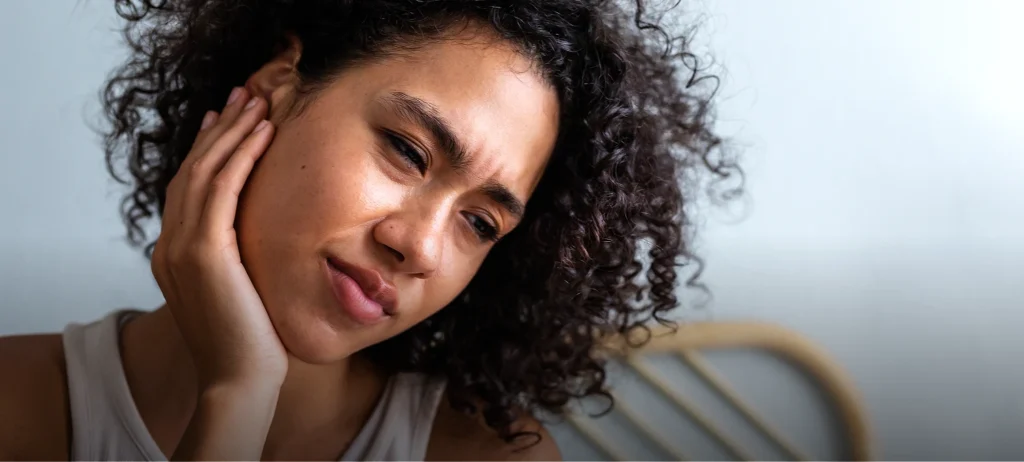TMJ Diagnosis & Treatment
TMJ Is Much More Than a Clicky Jaw. It’s a Whole-Body Health Issue. Left Untreated, It Tends to Get Worse
If your jaw clicks, locks, or hurts or if you’re fighting headaches, neck tension, or clenching, it’s probably not “just stress”. TMJ dysfunction is real.
We look beyond stress and night guards to understand what’s really happening. We find the root causes of TMJ problems and design custom treatment plans to relieve pain, restore balance, and help you feel like yourself again.
What You Need to Know About TMJ and How We Can Help You to Start Feeling Better
Hear directly from Dr. Monica Kim:
These short videos explain what’s really happening in the jaw joint, how we treat it, and why we take a phased, personalized approach to care.
Why TMJ Pain Is Often Misunderstood
Many people are told to manage stress, wear a night guard, or just live with the pain. But TMJ dysfunction is often a structural and airway-related issue. That’s why we look at the whole picture—and why our patients finally get answers here.
Common TMJ Symptoms We Treat
Jaw pain, clicking, or locking
Chronic headaches or migraines
Neck or facial muscle pain
Tooth grinding or clenching (bruxism)
Limited jaw movement or stiffness
Fatigue, ear fullness, or poor sleep linked to jaw dysfunction
Our Approach to TMJ Treatment
We don’t believe in quick fixes or generic splints. Our process includes:
01
Comprehensive TMJ
Assessment
- 3D imaging and joint evaluation
- Bite and muscle function analysis
- Sleep and breathing pattern review
02
Phase 1: Relief and Stabilization
- Custom orthotics to decompress the joint
- Myofunctional therapy for muscle support
- Laser therapy or manual treatment as needed
- PRF
03
Phase 2: Long-Term Correction
- Orthodontic or bite adjustments
- Continued therapy and monitoring
- Collaborative care with airway and sleep providers
TMJ Diagnosis & Treatment FAQs
What is TMD/TMJD?
Dr. Monica Kim
How orthodontics can expand your arches and benefit your health
Dr. Ilan Abramowitz
What is PRF?
Dr. Monica Kim
You Don't Have to Live With Pain
TMJ symptoms can impact everything from how you sleep, eat, speak, and feel each day. You deserve more than a band-aid. Schedule a comprehensive evaluation today and let’s find real relief, together.

